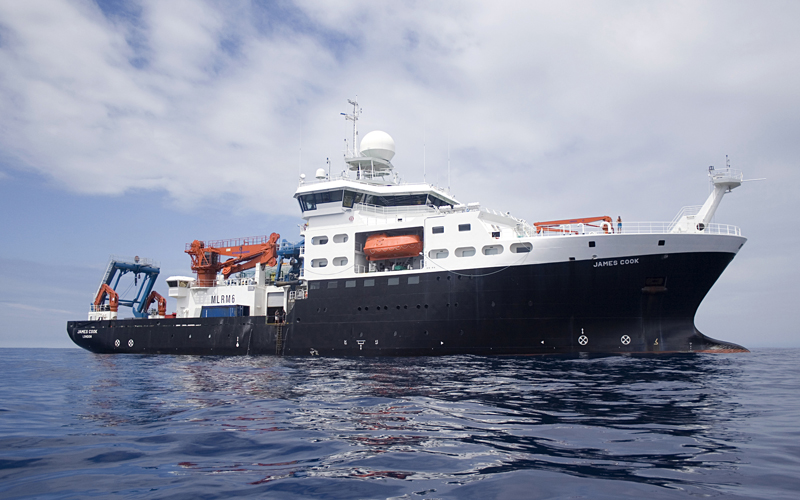JAMES COOK JC45
- Area:
- Montserrat
- Time:
-
24.04.2010 - 15.05.2010
- Institution:
- NERC-NOC
- Chief scientist:
- Peter Talling
From 24.4. to 12.5. 2010 RRS Cook of the British National Environment Reseach Council (NERC) is mapping out extremely large landslide deposits offshore from an active volcano on Montserrat in the Lesser Antilles. This volcano has been erupting episodically since 1995, with the last major eruption and volcanic dome-collapse occurring only a few months ago in February 2010.
Many thousands of years ago far larger collapses of the entire volcanic edifice occurred. These collapses sent huge landslides into the ocean to the east and south of the island. Some of these landslides involved over 5 km3 of material and travelled underwater for tens of kilometres. They are much larger than even the largest of the volcanic dome collapses since 1995. These huge volcanic landslides most likely generated tsunami waves, although the magnitude of these tsunami waves is uncertain.
The scientific team onboard the RRS Cook led by Dr. Peter Talling of the National Oceanography Centre (NOC) is aiming to produce the first detailed survey of this type of volcanic flank collapse deposit. This includes the first time that flank collapse deposits have been imaged by collecting seismic reflection data in a three-dimensional block. Responsibly for collecting and analyzing these 3-d seismic-reflection data are Prof. Christian Berndt and colleagues from the Leibniz-Institute of Marine Sciences (IFM-GEOMAR) in Kiel. The team wish to learn if landslides from the volcano that are violently emplaced on the sea floor, can trigger even larger scale failure of the underlying sea floor sediment.
A second aim of the cruise is to provide the remaining site survey data for an ambitious Integrated Ocean Drilling Program proposal to drill into and recover material from the landslides themselves. This drilling will help to date the landslides, and show whether the landslides are associated with particular eruptions or other changes in the behaviour of this volcano.
Besides scientists from NOC and IFM-GEOMAR the project includes colleagues from the Institute de Physique du Globe de Paris, the University of Tokyo, the University of Bristol and the Montserrat Volcano Observatory.



